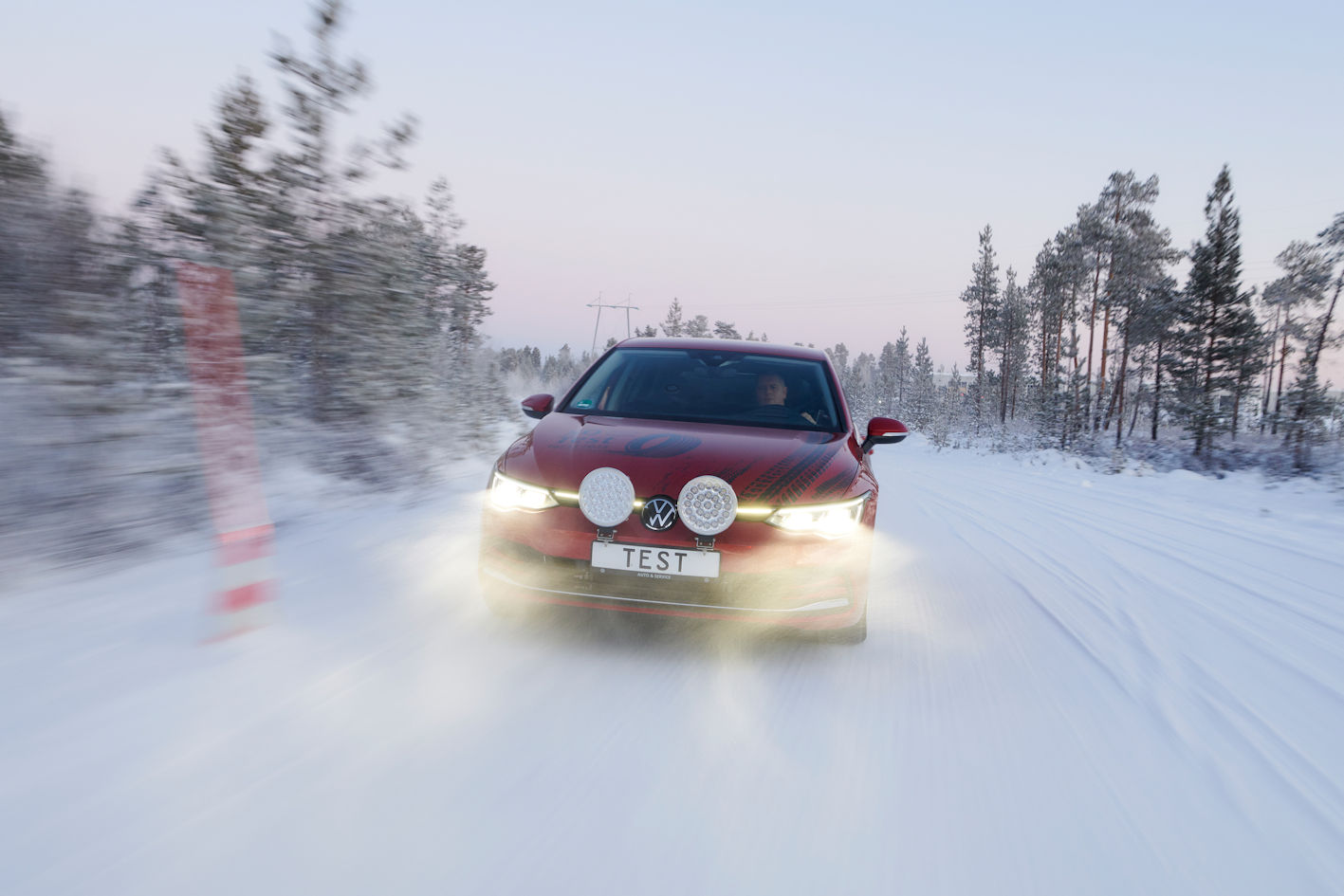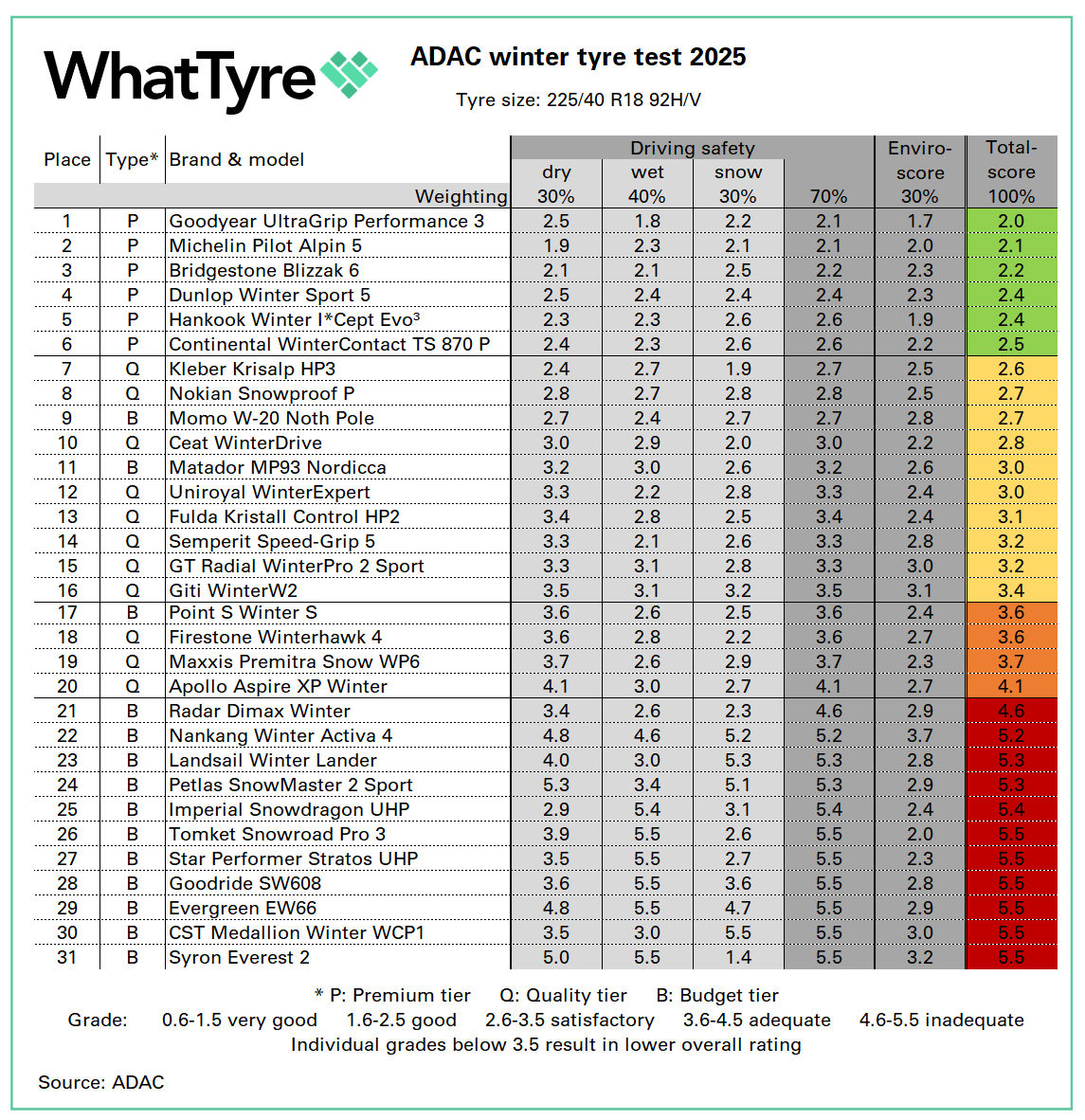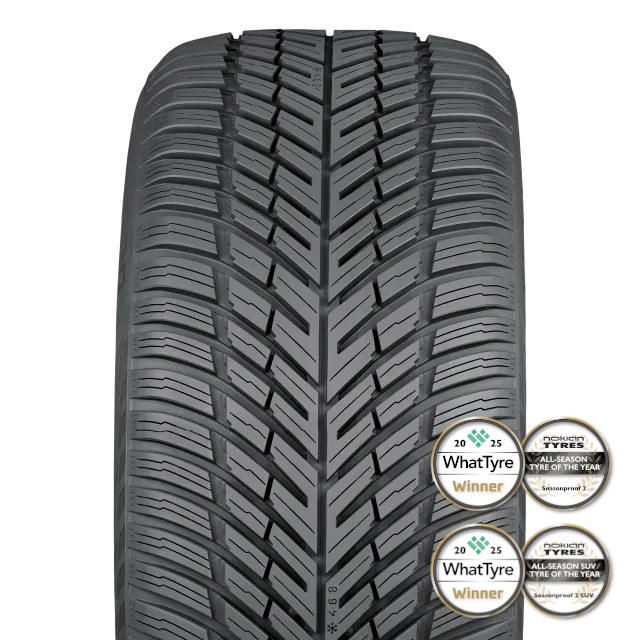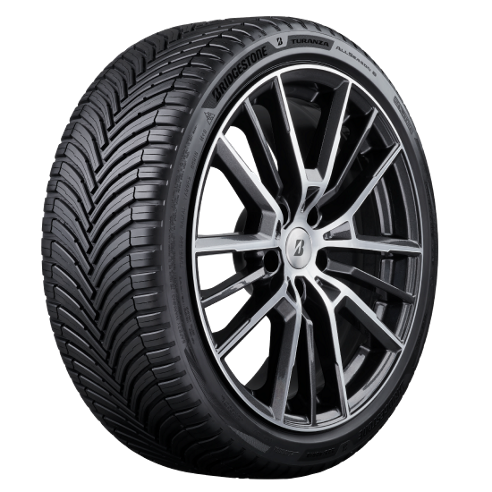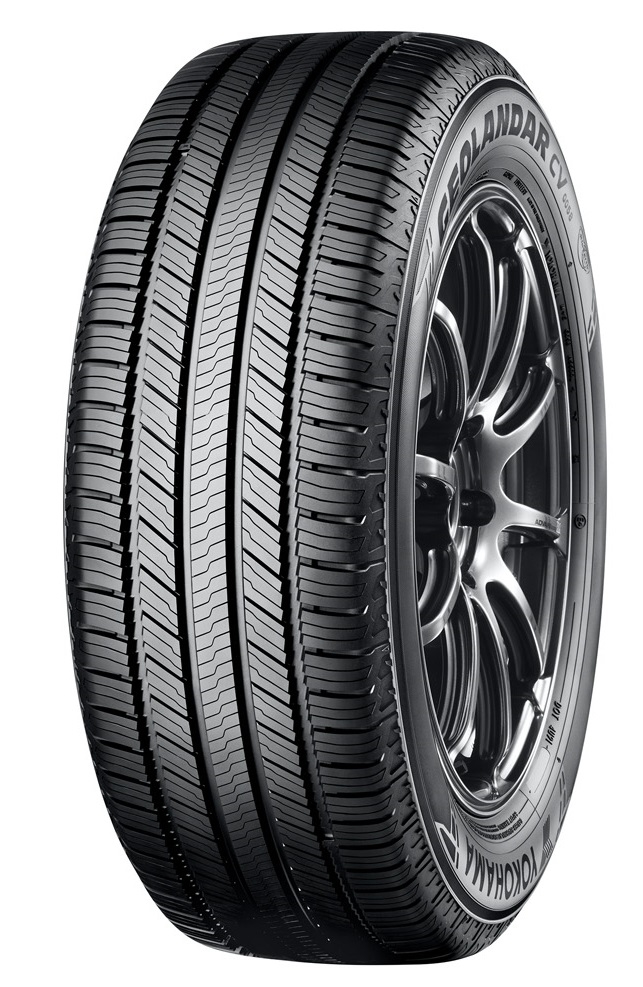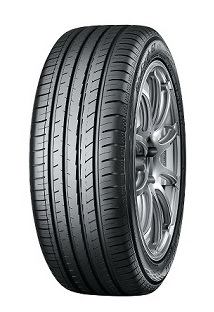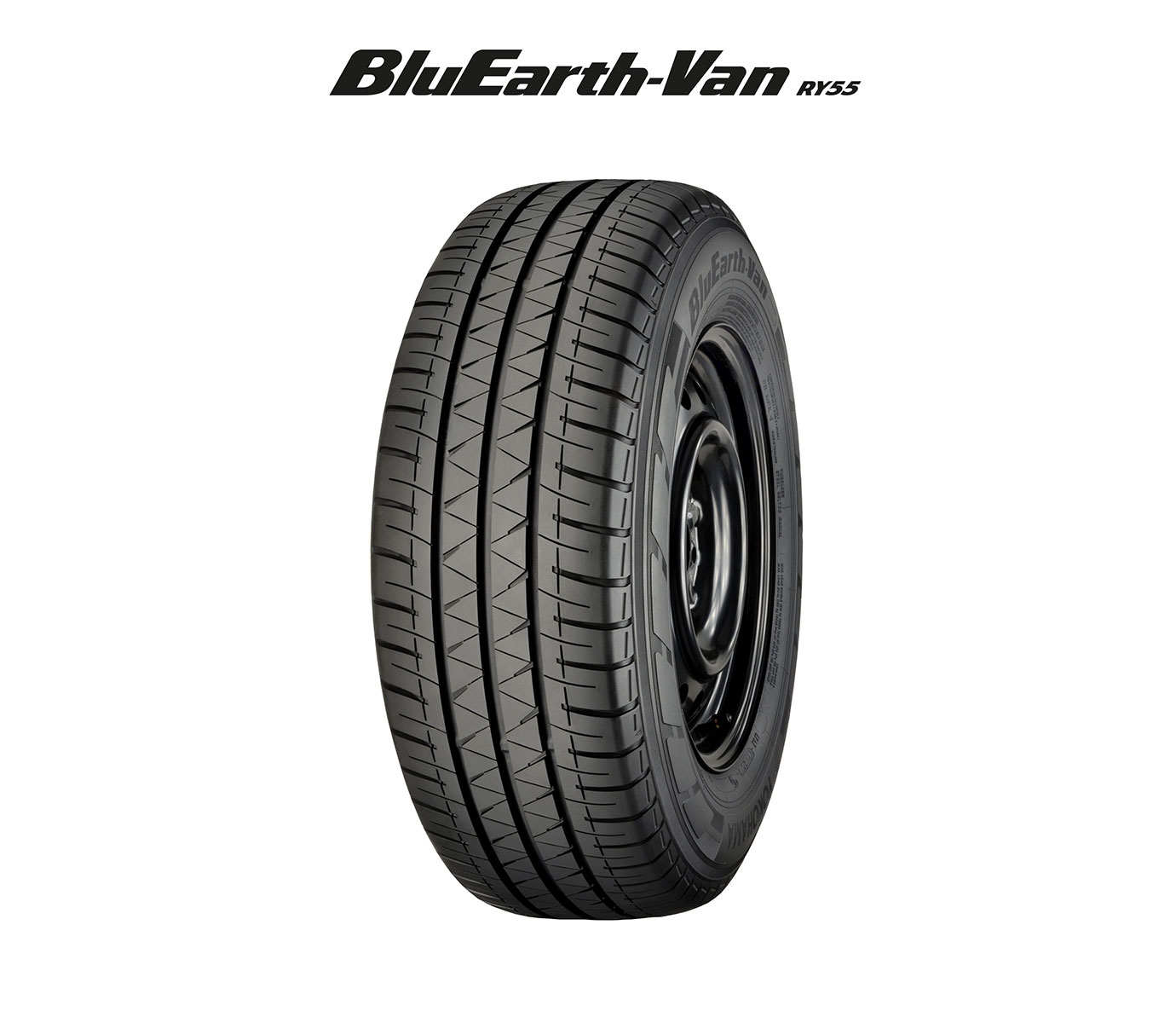For winter 2025, European motoring organisation ADAC and its partners have conducted their largest tyre test to-date, with 31 premium, mid-range and budget tyre brands battling it out. The tyre size of choice for this year is 225/40 R18. ADAC found just six of the 31 tyres to be ‘good’ products and gave 11 of them the lowest rating possible.
The ADAC test team fitted all 31 tyre models to a VW Golf and evaluated these at several proving grounds around Europe, including facilities owned by Bridgestone, Continental and Testworld, as well as its own centre in southern Germany. As driving safety is the top priority, related testing contributed 70 per cent towards the final score. From this, performance on wet road surfaces accounted for 40 per cent of the safety score, with testing on dry and snowy roads each contributing 30 per cent. Environmental testing contributed 30 per cent towards the overall score and examined mileage, wear, efficiency, weight, and noise.
Premium tyres deliver top results
According to the ADAC’s own test report, “premium is best.” Elaborating on its praise for upper tier tyres, the motoring association explains that these offer a Goldilocks-style baby bear balance of the right characteristics, setting them apart from lesser, lower-priced rivals.
In contrast, we quickly gained the impression that the ADAC is not enthusiastic about budget tyres. It calls these products “no-name” tyres and remarks that while they typically sell at significantly lower prices than better known brands, anyone “who thinks all winter tyres are equally good is seriously mistaken.”
For its winter 2025 test, ADAC completely withheld its top ‘very good’ result, but all six tyres gaining the next-best ‘good’ overall rating are premium products. Four of these – test winner Goodyear UltraGrip Performance 3 as well as the Michelin Pilot Alpin 5, Bridgestone Blizzak 6 and Dunlop Winter Sport 5 – completed all test criteria without any blemish to their names. The other two, the Hankook Winter i*cept evo3 W330 and Continental WinterContact TS 870 P, scored slightly lower in driving safety testing but performed highly in environmental criteria.
“The Goodyear UltraGrip Performance 3 secured the top spot in the 2025 winter tyre test,” writes the motoring association, adding: “It offers good driving performance, especially on wet surfaces, and also impresses with a predicted mileage of over 76,000 kilometres. The Michelin Pilot Alpin 5 came in a close second. In terms of driving safety, the Bridgestone and Dunlop models also received good ratings.”
Satisfactory
After this half-dozen tyres, ADAC moves on from the premium segment, categorising most products finishing immediately below as quality tyres; eight of the ten candidates gaining a ‘satisfactory’ rating slot into this product tier. ADAC tells its readers that these tyres can be “added to your shopping list if you look at the details and consider exactly which strengths and weaknesses are important for your personal driving profile.”
These ‘satisfactory’ quality tyres are: Kleber Krisalp HP3, Nokian Tyres Snowproof P, Ceat WinterDrive, Uniroyal WinterExpert, Fulda Kristall Control HP2, Semperit Speed-Grip 5, GT Radial WinterPro 2 Sport and Giti GitiWinter W2.
Two tyres that ADAC classes as budget tyres also achieved this ‘satisfactory’ driving safety rating. These are the Matador MP93 Nordicca and Momo W-20 North Pole. Both are “tyres with slight weaknesses but can still be an acceptable alternative for infrequent drivers.”
Adequate
Describing someone or something as ‘adequate’ sounds like a backhanded compliment, but ADAC pulls no punches with the four tyres it gave this rating to. Three of these are quality tier tyres. “The ADAC cannot really recommend three of the tyres in the mid-price segment: Firestone Winterhawk 4, Maxxis Premitra Snow WP6 and Apollo Aspire XP Winter.” The ADAC explains that the Firestone tyre is a “good winter tyre in itself” that performs well on ice and snow, but “feels spongy on dry roads and exhibits unsafe handling, especially during sudden evasive manoeuvres.” It adds that the Maxxis and Apollo tyres are “similarly unbalanced.” ADAC also gave its ‘adequate’ rating to the Point S Winter S.
Mangelhaft – inadequate
The German word ‘mangelhaft’ can be translated in a number of ways, including as inadequate, deficient, imperfect, defective and flawed. At any rate, it isn’t a word any tyre maker wants associated with their products. Yet ADAC has declared no less than 11 tyres to be mangelhaft. These products – all from the “entry-level segment” – performed “poorly” with overall quality and even winter characteristics that “often leave much to be desired.” ADAC writes: “Eleven of the budget tyres performed so poorly in at least one driving test that they had to be classified as inadequate. These products pose a serious safety risk to motorists.”
Detailing specific issues encountered, ADAC reports that the CST Medallion Winter WCP1, Petlas SnowMaster 2 Sport and the Nankang Winter Activa 4 “simply lack grip,” causing the test vehicle to skid very early on snow. The Landsail Winter Lander was hard to control and stop on snow-covered roads, while the Evergreen EW66 struggled when braking on ice. “This is all the more worrying because all tyres with the snowflake (3PMSF symbol) on the sidewall are officially suitable for winter use.”
ADAC recommends higher priced tyres
In its conclusion, ADAC declares that “you get what you pay for.” The association recommends anyone who wants the best tyres to invest in premium tier products, adding that quality tyres are also an option so long as motorists know each product’s specific strengths and weaknesses.
“The test results show that it is a major challenge for tyre manufacturers to reconcile various requirements (such as handling in changing conditions, price, mileage). It is certainly possible, but this usually comes at a higher price. The six best tyres are all models from the premium category. The ADAC recommends that motorists in wintry regions invest in high-quality tyres, because those who save money on the purchase usually also save on safety. For occasional drivers in temperate regions, some cheaper tyres may be an option. Those who rarely encounter winter conditions and can leave their car at home from time to time may also be well advised to choose good all-season tyres.”

